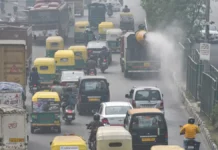NEW DELHI: Underfunding of the public healthcare system and the particularly disastrous Covid-19 second wave worsened health infrastructure and disproportionately affected health outcomes of marginalised groups, according to a report by Oxfam India.
The report titled “Inequality Report 2021: India’s Unequal Healthcare Story” showed that the general category performed better than Scheduled Castes (SC) and Scheduled Tribes (ST); Hindus perform better than Muslims; the rich perform better than the poor; men are better off than women; and the urban population is better off than the rural population on various health indicators. The Covid-19 pandemic has further exacerbated these inequalities.
The data showed that 65.7 per cent of the households belonging to the general category have access to improved, non-shared sanitation facilities while only 25.9 per cent ST households have improved, non-shared sanitation facilities.
About 12.6 per cent more children are stunted in SC households than those in households belonging to the general category. And the chances of a child dying before his fifth birthday is three times higher for the bottom 20 per cent of the population as compared to the top 20 per cent.
The rich, on an average, live seven and a half years more than the poor. Similarly, on an average, a woman from the general category lives 15 years longer than a Dalit woman.
Dalits, Adivasis and OBCs have higher infant mortality rate (IMR) as compared to the general category. IMR for Adivasis is 44.4 which is 40 per cent more than the general category and 10 per cent more than the national average, showed the report.
Further, constant underfunding of the public healthcare system in the last decade has worsened health infrastructure.
The number of hospital beds per 10,000 population between 2010 and 2020 reduced from 9 to 5. Currently, India ranks 155 out of 167 countries on bed availability and has 5 beds and 8.6 doctorsA per 10,000 of its population. Rural India houses 70 per cent of the population, while it has 40 per cent of the beds in the country, the report revealed.
This lack in health infrastructure in rural India resulted in the devastating effect of the second Covid- 19 wave. By May 2021, one in every two cases was in the rural areas, while states like Uttar Pradesh and Rajasthan had 75 per cent of their cases in rural areas.
On the other hand, higher public health allocations have shown a positive effect on health outcomes in pandemic.
State governments with higher expenditure on health had lower confirmed cases of Covid-19. States such as Odisha and Goa, with higher expenditure on health also had higher recovery rate from Covid-19, showed the report.
“Persistent underfunding of public health systems, especially primary health care and inadequate health infrastructure in India remain to be addressed by the government even after devastating second wave. Otherwise, health emergencies will only aggravate existing inequalities and work as a detriment for the poor and the marginalised. Declaring health as a constitutional right can help to bridge these gaps,” said Amitabh Behar, CEO, Oxfam India, in a statement.
The report recommends implementation of Universal Health Coverage (UHC) supported by a strong public health sector, to address these fundamental inequalities in the health system.







